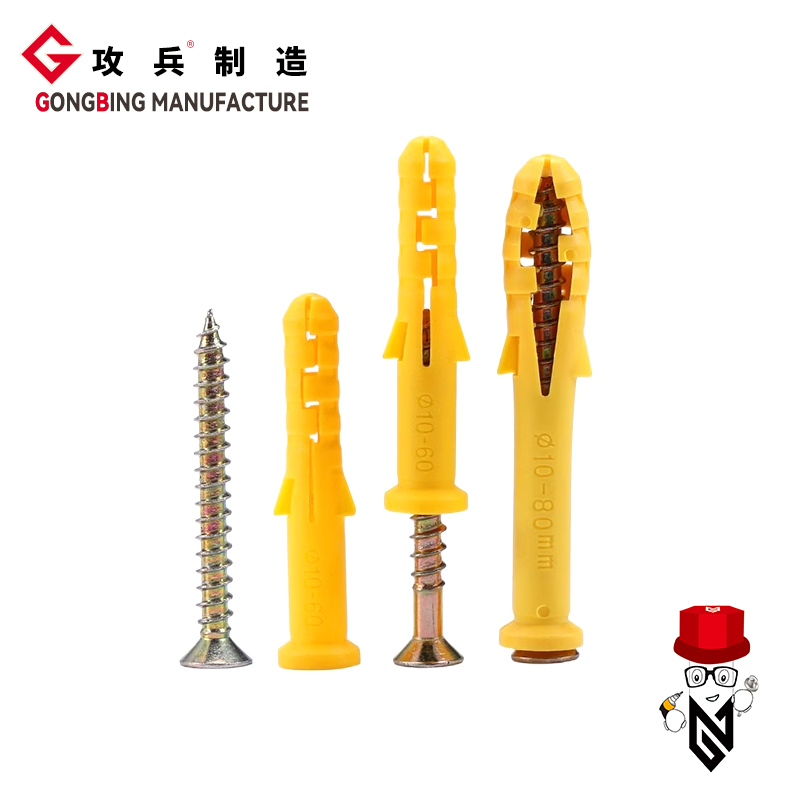metric double ended studs
Understanding Metric Double-Ended Studs A Comprehensive Guide
In the world of mechanical engineering and construction, the importance of fasteners cannot be understated. Among the various types available, metric double-ended studs have gained significant traction due to their versatility and reliability. This article explores the characteristics, applications, and benefits of metric double-ended studs.
What Are Metric Double-Ended Studs?
Metric double-ended studs are fasteners that feature threads on both ends and a smooth or unthreaded section in the middle. Typically made from robust materials like stainless steel or carbon steel, these fasteners are designed to create a secure connection between two components. The metric designation refers specifically to the metric system of measurement, where sizes are categorized using millimeters, making them suitable for precise engineering projects particularly prevalent in Europe and other regions utilizing the metric system.
Features and Specifications
The primary feature of metric double-ended studs is their dual-thread design, allowing them to serve as a connecting piece between two parts that may not be directly affixed to each other. Some of the key specifications include
- Thread Type Commonly, the threads conform to the ISO metric screw thread standards, ensuring compatibility with a range of nuts and other fasteners. - Lengths These studs come in various lengths, typically ranging from a few millimeters to several centimeters, allowing for customization depending on the application. - Material As previously mentioned, common materials for these studs include stainless steel, which is resistant to corrosion, and high-carbon steel, which provides exceptional strength and durability. - Coatings Many metric double-ended studs come with protective coatings to further enhance their resistance to corrosion and wear.
Applications
Given their robust design and versatility, metric double-ended studs are employed in numerous applications across various industries
. Some prominent uses include1. Automotive Industry In vehicles, double-ended studs are frequently used for securing components such as engine parts and chassis fittings. Their ability to provide reliable connections is essential for safety and performance.
metric double ended studs

2. Construction In the construction sector, these studs serve as anchor points for structural supports, allowing for the assembly of different materials with ease. Their adaptability makes them suitable for both residential and commercial buildings.
3. Manufacturing Manufacturers utilize double-ended studs for assembling equipment and machinery. These fasteners enable straightforward disassembly and reassembly, which is a crucial aspect of maintenance and repairs.
4. Aerospace The aerospace industry relies on high-grade materials and precise engineering. Metric double-ended studs are often employed in aircraft assembly processes, ensuring that critical components are securely connected.
5. Marine Applications Given their availability in corrosion-resistant materials, these studs are also utilized in marine environments, where exposure to water can lead to rapid degradation of lesser materials.
Benefits of Using Metric Double-Ended Studs
The advantages of opting for metric double-ended studs in various applications are manifold
- Strength The robust design ensures high tensile strength, making them ideal for heavy-duty applications where strength is paramount. - Versatility Their ability to connect two components without the need for additional hardware simplifies assembly and allows for flexible design choices. - Ease of Use Installation is straightforward, requiring only standard tools, which can save time and labor costs. - Consistency The metric standards ensure uniformity across different manufacturers, reducing compatibility issues.
Conclusion
Metric double-ended studs are an integral part of modern engineering and construction practices. Their dual-thread design, material versatility, and broad range of applications underscore their importance in ensuring secure and reliable connections in a variety of environments. Whether it’s in automotive, aerospace, or construction, understanding the benefits and specifications of these fasteners is essential for professionals seeking to optimize their projects. By choosing the right double-ended studs, engineers and construction managers can ensure the longevity and safety of their work, ultimately leading to successful project outcomes.
-
Weatherproof Plastic Expansion Anchors for OutdoorTala FouJun.06,2025
-
Sustainability in the Supply Chain: Eco-Friendly TEK Screws ProductionTala FouJun.06,2025
-
Load-Bearing Capacity of External Insulation FixingsTala FouJun.06,2025
-
Double Head Bolts: Enhancing Efficiency in Industrial MachineryTala FouJun.06,2025
-
Corrosion Resistance in Chipboard Screws: Coatings for Wholesale DurabilityTala FouJun.06,2025
-
Butterfly Toggle Bolts : Enhancing Structural ResilienceTala FouJun.06,2025
